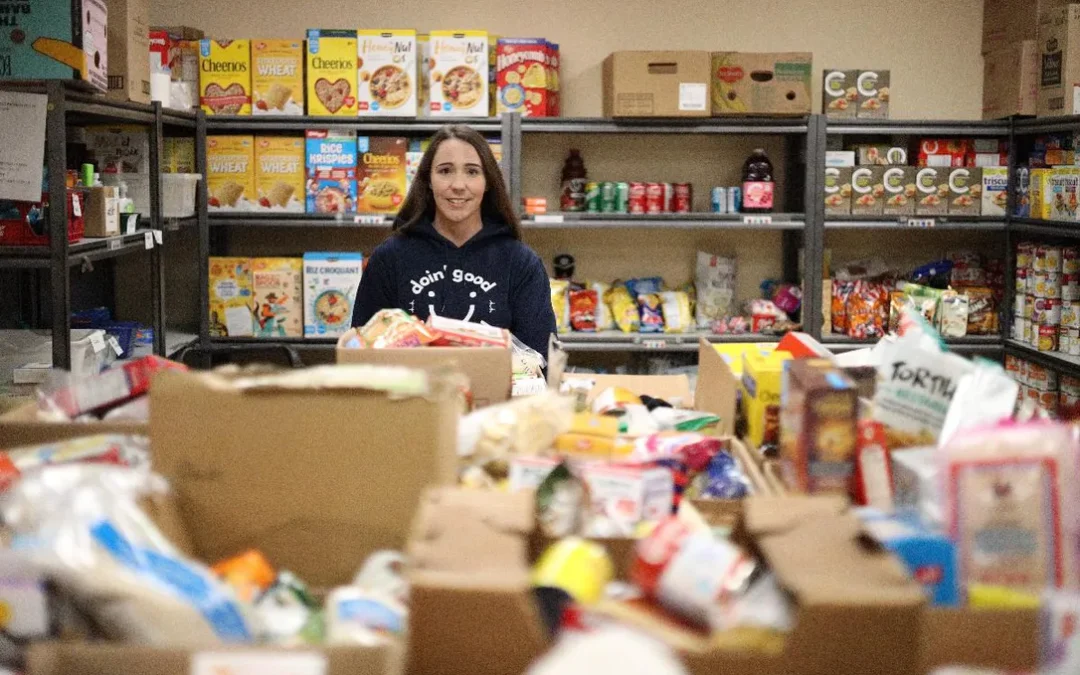There are three top reasons people accessed a bank, according to Food Banks Canada.
Those reasons include “food costs, low provincial social assistance rates and housing costs.”
The group’s latest report, the 2022 Hunger Count, titled “From a Storm to a Hurricane” notes “food bank visits are the highest they have ever been.”
Christine Clark Lafleur, executive director of Port Cares, has seen that increase firsthand, saying “It’s been the busiest it’s ever been.”
She noted on March 8, 2020 1,417 residents from Port Colborne and Wainfleet came to Port Cares Reach Out Centre for food. As of October 2022, they are helping 2,464 people, an increase of nearly 75 per cent in 30 months.
Over the past two weeks, 23 new registrations were made, noted Reach Out Centre manager Amada Upper.
Upper said that included a family that has donated to the food bank regularly in the past.
“It is reflective of the economic conditions,” said Clark Lafleur. “Typically we don’t see our new registrants ’til about November, December because, as we know, the winter months come with the challenges of paying your utilities, which often increase.”
Clark Lafleur said what is “unnerving” about the situation is all the talk about a coming recession.
“We are in the perfect storm. Need is going up exponentially,” she said. “But we’re a charity and at the same time need is going up we’re seeing some decline in donation. That’s the reality of the economic conditions we’re in.”
She described a “tipping point” where people begin to have difficulties paying their bills due to the increased costs and then are forced to choose between food and the place they live.
“These are hard choices. It’s really sad that people have to make these choices,” she said.
The Port Colborne Lions Club’s food drive, held on Oct. 22, was able to gather 23,303 pounds of food and $6,630 in cash donations.
The amount was down from last year when the Lions gathered about 27,000 pounds of food.
“The donations fell but the need has increased,” said Clark Lafleur.
Erin Mackenzie is a food bank intake volunteer with Port Cares. She has volunteered for the past three months.
Mackenzie, when she first started over the summer, said there were days without any new clients signing up.
Now, she said, it happens almost every time, including a time last week with five new registrations.
At Food With Friends, a food security program formerly known as Out of the Cold, the number of meals the group serves each week has increased from 50 to 60 meals prior to the pandemic to giving out 90 to 110 meals.
The Hunger Count shows that this year’s food bank usage represents a 15 per cent increase compared to March 2021, and a 35 per cent increase compared to March 2019.
Overall, food bank visits have skyrocketed since 2019, with the highest year-over-year increase in usage since the aftermath of the 2008 recession.
“Stagnant provincial social assistance rates, the end of pandemic-related benefits, and soaring inflation have all affected the ability of individuals in Canada to feed themselves and their families,” the report says.
Clark Lafleur said there is no single or easy solution to solving the need for food banks, noting it would require a “wholesome look at the conditions that contribute to poverty.”
One starting point could be affordable housing, she said.
“We’re trying to do it and it’s not easy but it’s the biggest thing that we need because you have to live somewhere,” she said.
By Nick Fearns, Reporter, Niagara Falls Review


